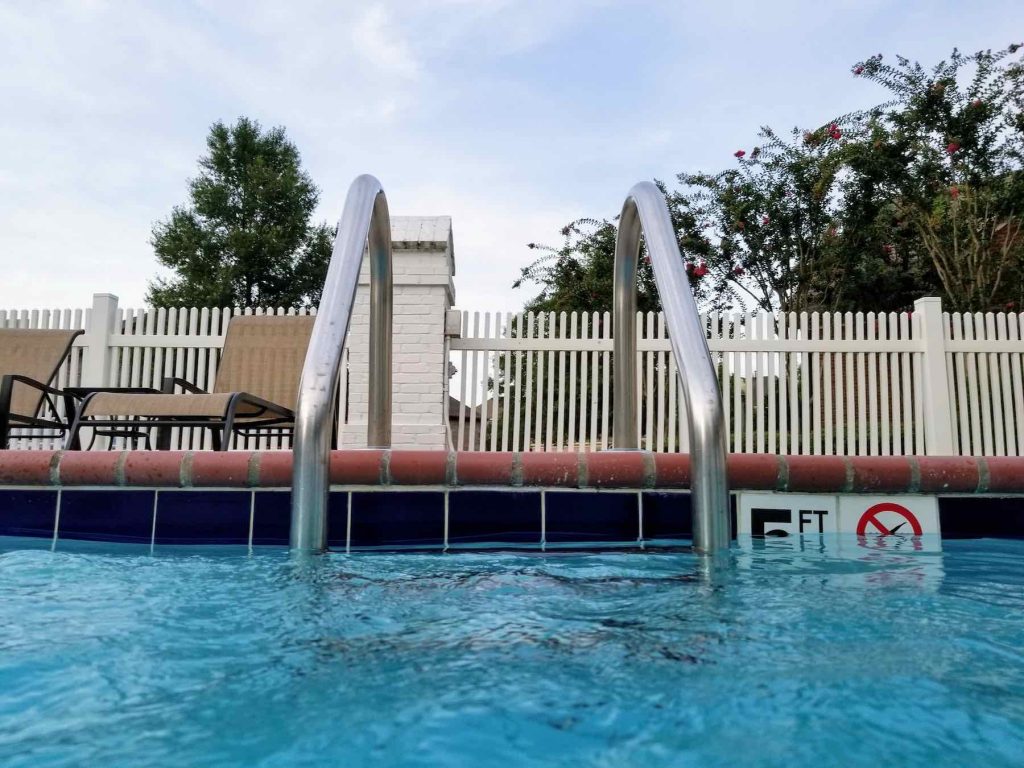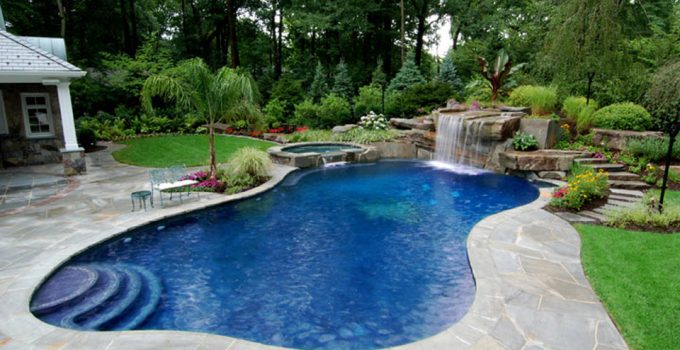When people decide to invest their money into a swimming pool, they tend to focus their energy on pure enjoyment and relaxation that awaits them, rather than thinking about numerous obligations that will go shoulder to shoulder with the positive sides. The same rule applies when individuals purchase real estate with an amazing-looking swimming pool that mesmerizes the observer at the first glance. Unfortunately, a swimming pool requires maintenance, and you will be able to enjoy it depending on how well you treat it. That brings us to the question of how often should you resurface your swimming pool, and since there is not a universal answer to this question, we shall try to bring you closer to it in the lines below.
Getting your swimming pool resurfaced is not a cheap venture one does frequently. Moreover, owners try to delay it as long as they can even though neglecting the issue might cause additional expenses. So, what is the swimming pool resurfacing and why should you do it? In a nutshell, it is a process of restructuring the old bottom layer of a swimming pool with a new one. Although it might seem not as important as it truly is, this procedure is crucial to maintaining the esthetic and health standards. Worn-out layers can become a place where various impurities might accumulate and endanger your health. Also, uneven and surfaces that are not smooth can cause physical damage to your skin, and finally, the appearance of the pool could get compromised after a certain period. There is no such thing as a cool old-school moss-grown swimming pool, but there are old swimming pools that could be resurfaced and brought back to life.
How Frequently Should You Resurface?

Source: pinterest.com
Although numerous factors might influence the condition of a swimming pool, most frequently the main culprit is the material of the construction. Certain materials such as fiberglass provide the most stable structure so you might expect to renovate your object in as much as 30 years after the construction. On the other hand, if you have a concrete swimming pool, you would need to resurface it after half of that period, but you could do minor improvements every 4-8 years and delay the major reconstruction. That would consider a timely reaction before any major deformities are formed. When gunite swimming pools are in question, they should be replastered every 7-10 years, depending on the condition.
Resurface Options
When it comes to choosing the resurface material, you can either stick to the one your swimming pool is already coated with or choose another one that you recon will provide more comfort and durability. Also, you can choose the resurface material on your own or you could consult a resurfacing company and ask for their professional opinion. If you want to learn more about plaster, concrete resurfacing, epoxy coatings and find additional pieces of information related to swimming pool resurfacing, feel free and visit poolresurfacingpalmsprings.com and see how you can make your favorite place become even more enjoyable.
Unexpected Water Drainage and Chalky Residue

Source: doheny.com
Although your water filters might be working adequately if you notice that water levels are getting lower out of the blue while what you are left with is the turbid liquid, what you should do is schedule an appointment with a resurfacing company as soon as you can. Namely, this usually happens when the bottom of a swimming pool cracks, so the structure cannot keep the water inside. The process is irreversible, so you should not expect the problem to solve itself, moreover, the sooner you react the better.
Visible Cracks and Scratching Surface
Let’s be honest, owning a pool is not for people who cannot afford it. It is a type of investment that will drain your money for as long as you have it, but it will provide you with a setting ideal for making memories with your friends and family, unlike anything else in return. Precisely for that reason, you should do something about visible cracks as soon as you notice them. You could say that the scratchy surface is an initial indication that your swimming pool requires resurfacing, and besides that, it feels terrible and can damage your skin. In the end, if a commodity becomes a place where you can get hurt instead of enjoying yourself, its status could quickly change from the most to the least favorable special spot at your place.
How to Postpone Swimming Pool Resurfacing

Source: youtube.com
To be honest, there is nothing much you can do if you have already noticed that something is wrong with your swimming pool. That involves the aforementioned situations where the looks and the characteristics of your pool have drastically changed. On the other hand, what you can do in order to adjourn the decadence is to pay special attention to adequate maintenance from the day the renovation takes place. That should include careful use of chemicals and regular cleaning of impurities. Servicing water filters would affect the quality of the water and, therefore, indirectly affect the rest of the pool. Not using aggressive chemicals does not mean that you should avoid using cleansers at all. Moreover, you should pay attention to the ones with natural ingredients instead of opting for the ones that boast to dissolve everything that comes in their way.
What you should also pay special attention to is taking care of your swimming pool in the winter. Pools are ideal when the weather is nice, so we tend to forget about them when summer is over. Surely, you will not need to spend the winter babysitting your swimming pool, but you should take care of it by providing adequate isolation, so you can use it again when the weather conditions allow. By taking these steps not only do you secure to enjoy your swimming pool for longer, but you also save your money.
The point of having a swimming pool is to take pleasure in it with the ones close to you, but that would not be possible if its condition is questionable. Hopefully, the aforementioned pieces of information and suggestions will prove their usefulness and appoint you to react in a timely matter.







